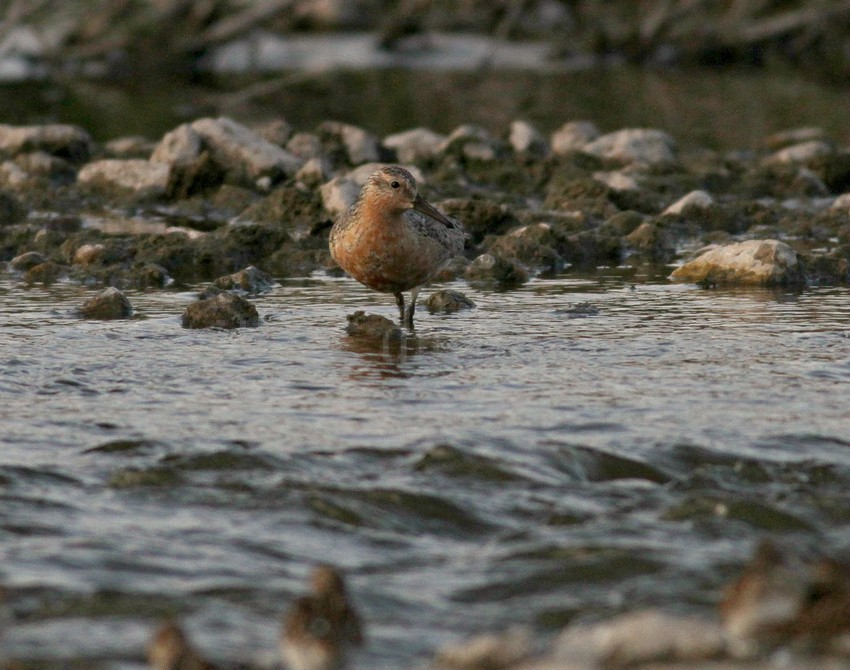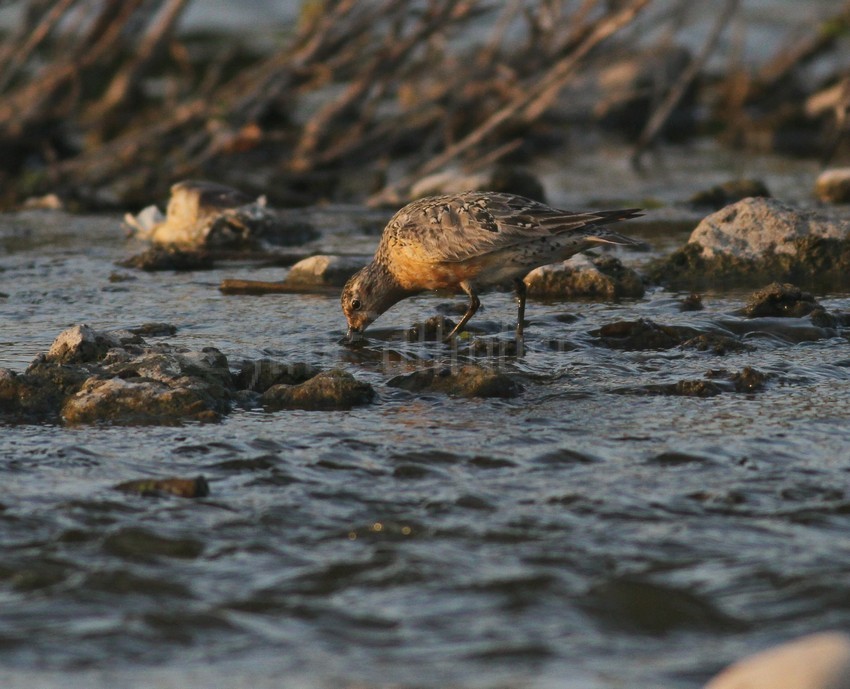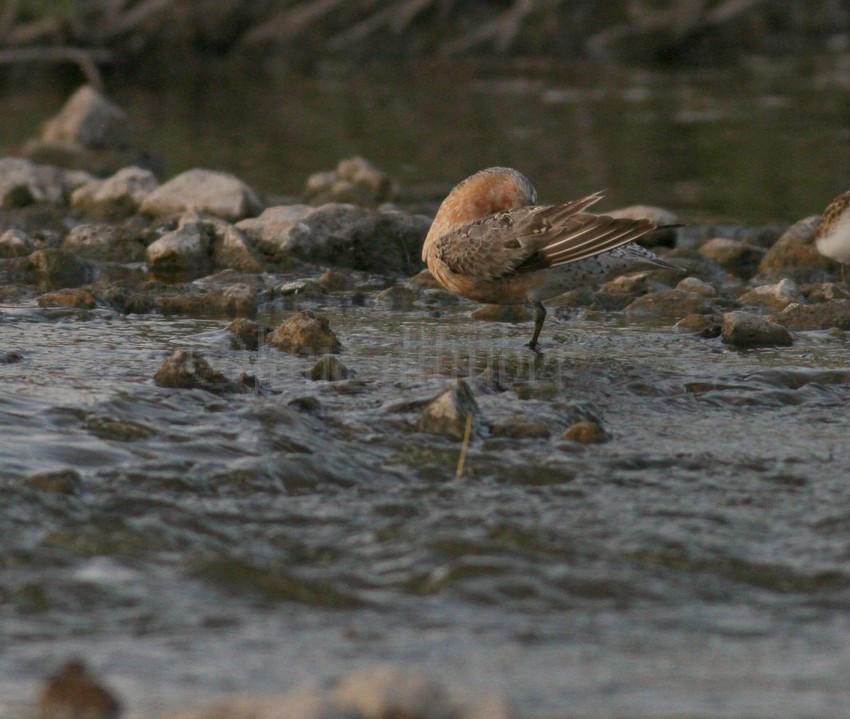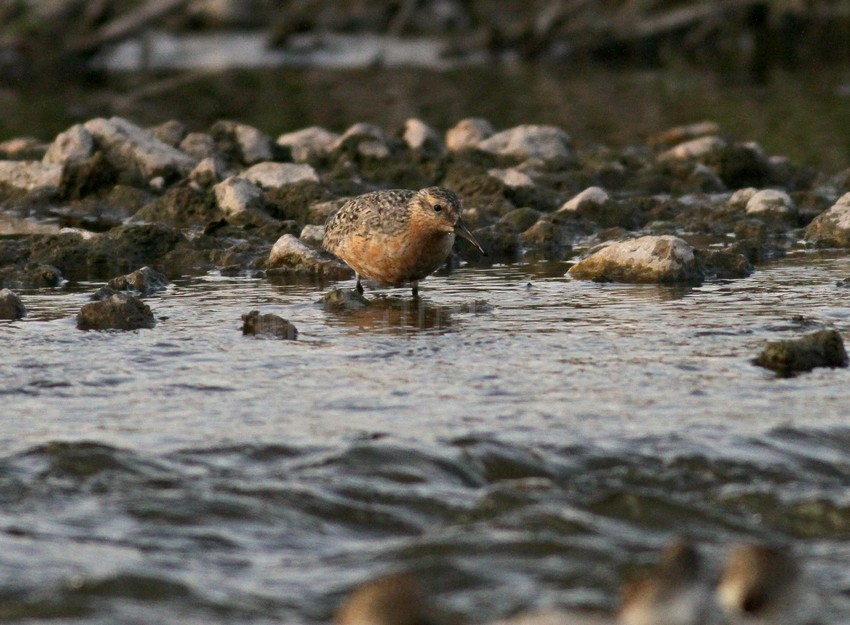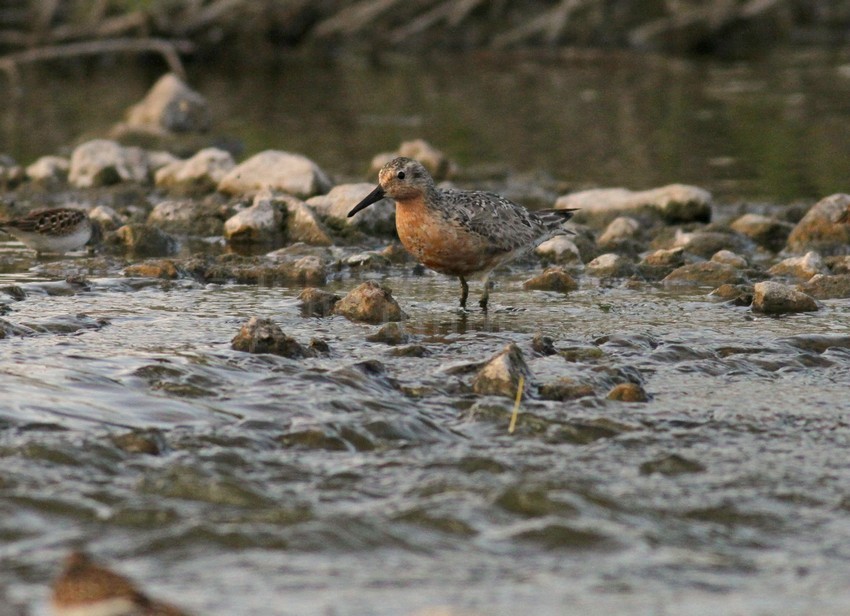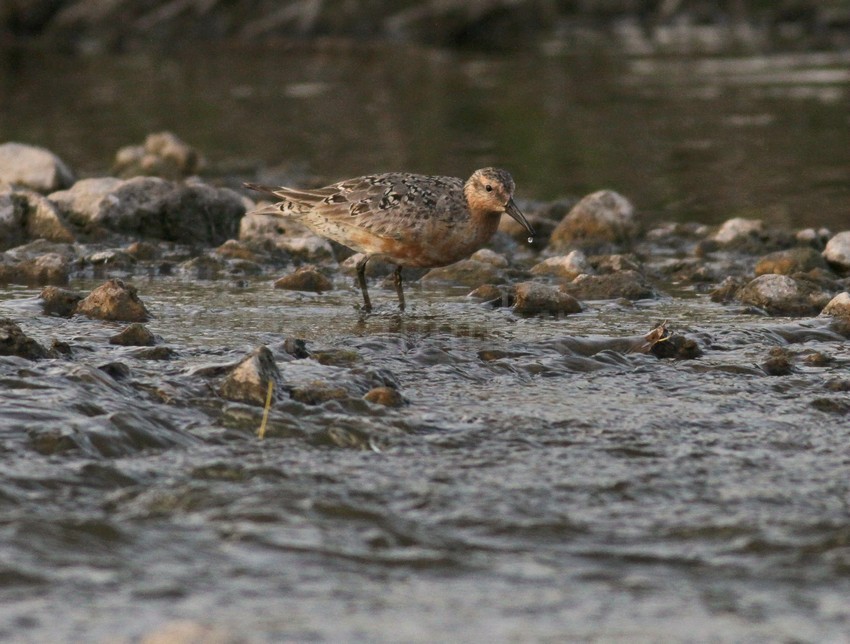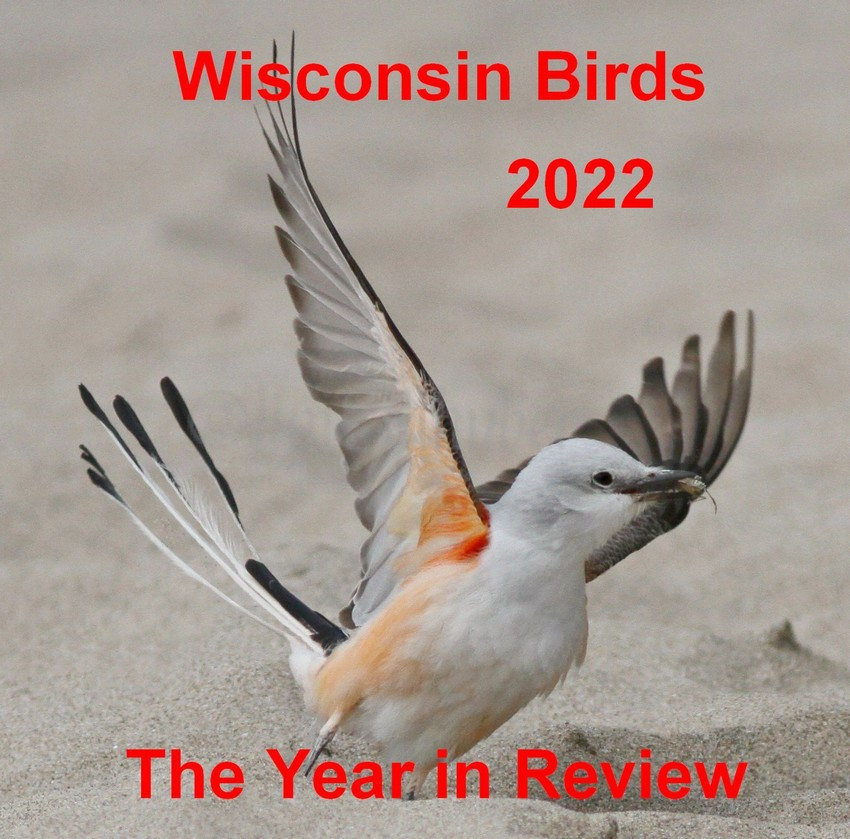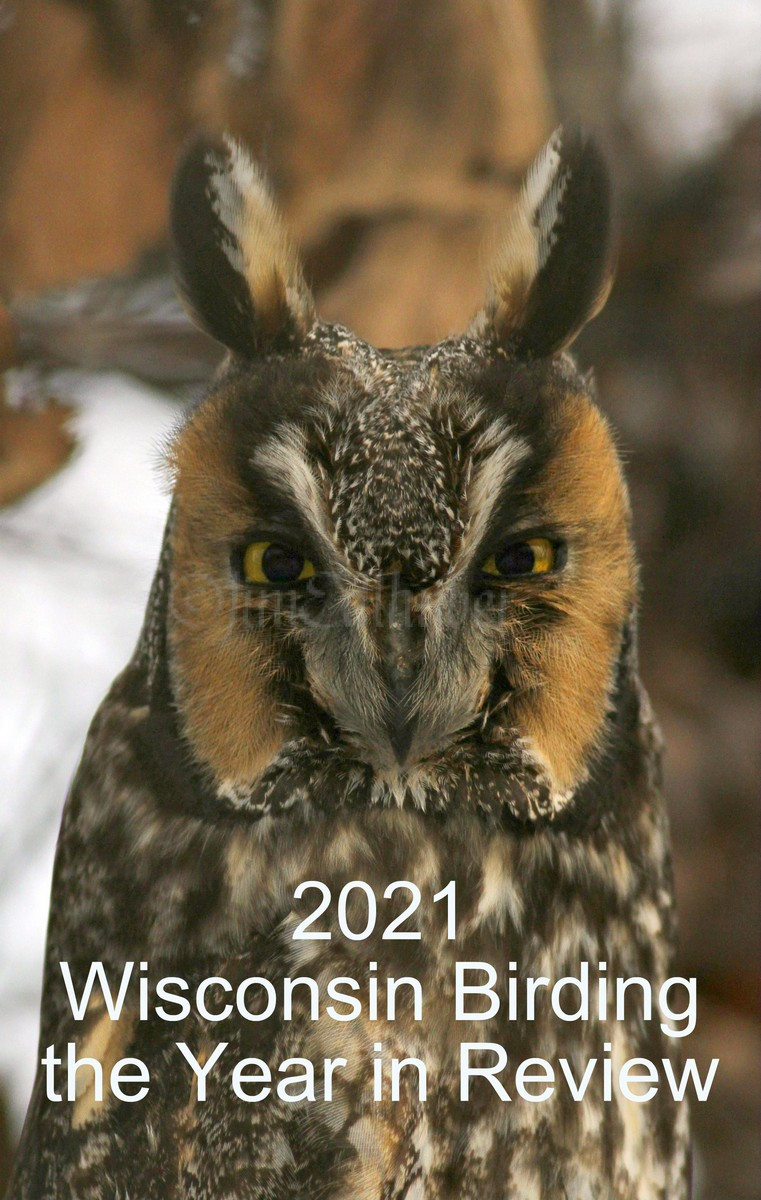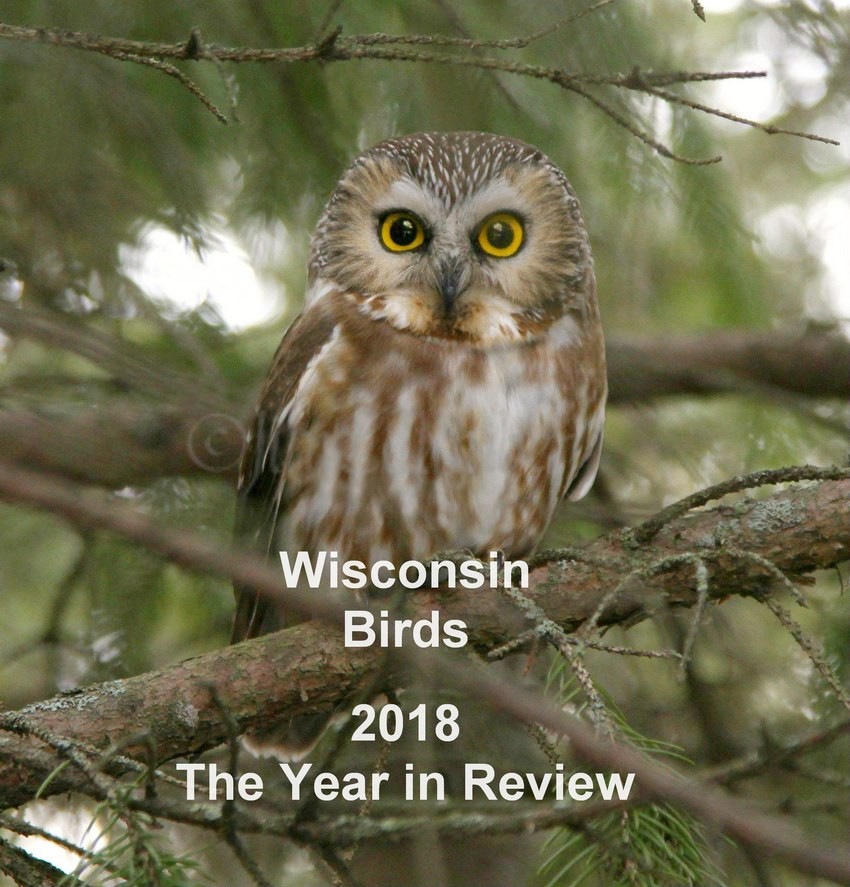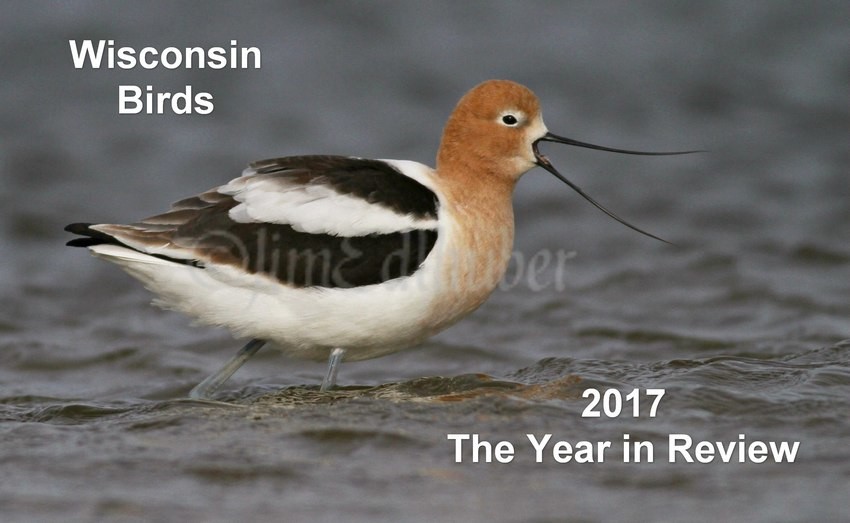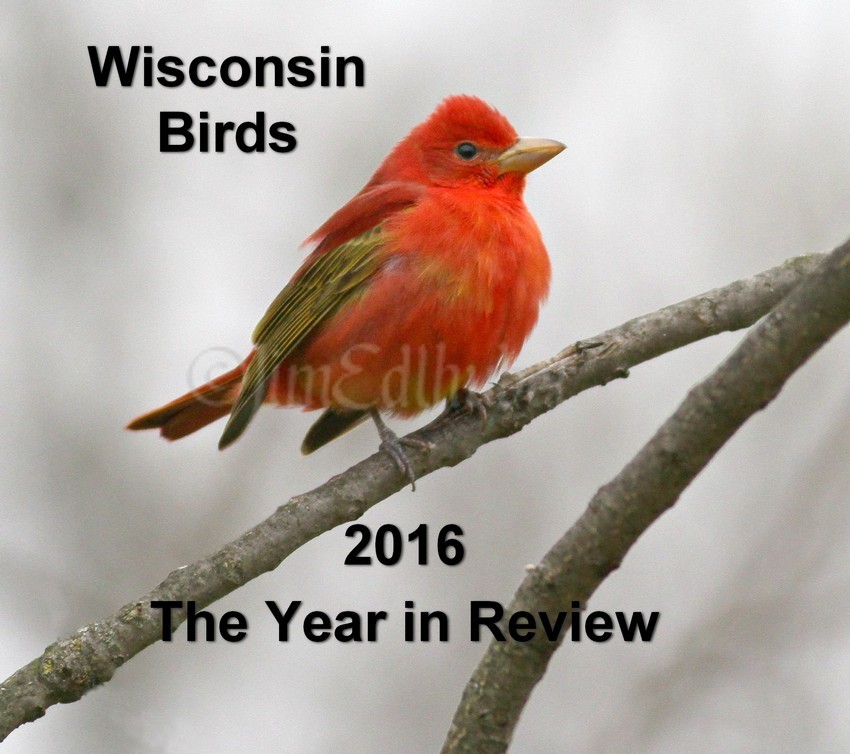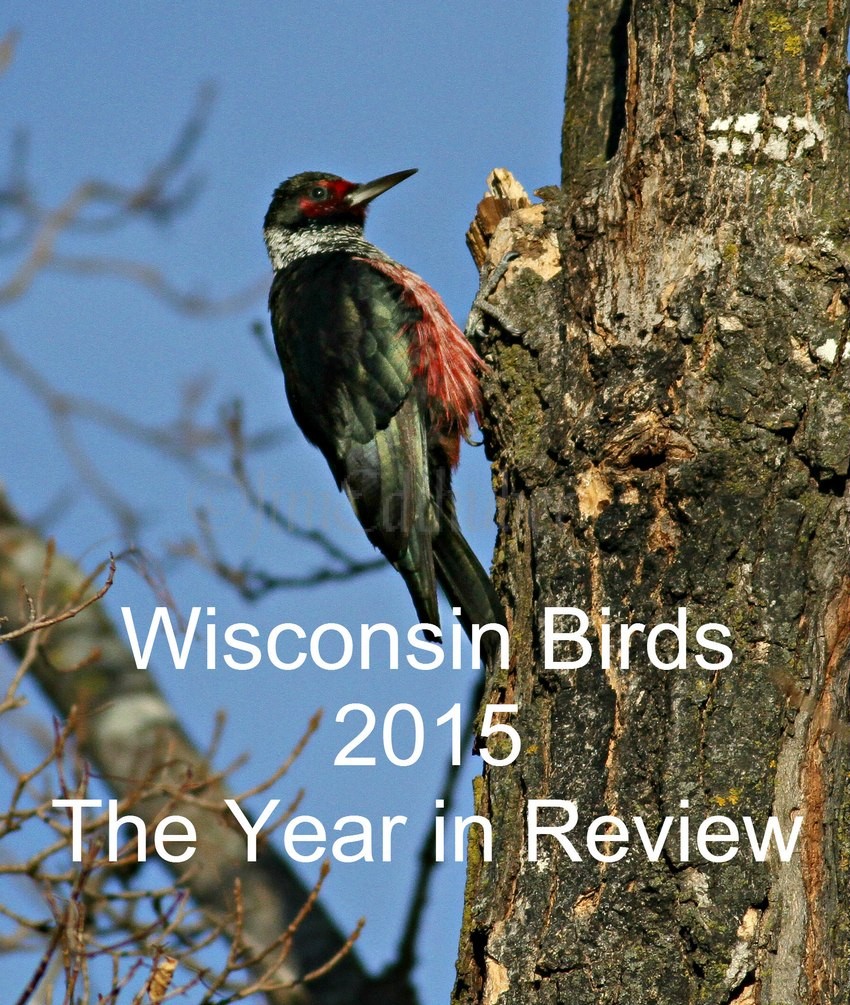After seeing a post this evening of a rare visitor to Wisconsin a Red Knot in Hustisford I made the trip up there just before dark, about 7:00 PM. The bird was present as reported below the wires over the river below the dam. A new life bird for me. Thanks to Tom W. for finding this bird along with the presence of Dave S. Images were taken in Dodge County Wisconsin on August 15, 2014.
Red Knot
Binomial name: Calidris canutus
Category: Sandpipers, Phalaropes, and Allies
Size: 10.5” long, 23” wing span
Weight: 4.7 Oz.
Habitat: Breeding habitat in tundra areas that are drier and hillsides with sparse vegetation. Outside of breeding habitat they are found near coastal inlets, large tidal mudflats, rocky shores and beaches, bays and estuaries.
Diet: Breeding season it eats sedge seeds and shoots from horsetail and grasses. In snow free areas it will include some invertebrates in their diet. They eat marine worms, grasshoppers, horseshoe crab eggs and other invertebrates in their winter range.
Nesting: Their nest is a depression on the ground lined with lichens, grasses and leaves. It is cup shaped and constructed by the male. 3 to 5 of these are male prior to the arrival of the female, she lays 3-4 eggs and they are incubated around 22 days by both parents. Chicks are hatched in downy cryptic feathers. With a day or so the chicks leave the nest and area and they begin foraging with both adults.
Cool facts: One of the most colorful peeps and the largest in North America. There was a time when the Red Knot was the most numerous shorebird in North America. It migration can be one of the longest being up to 10,000 miles one way. The young chicks make their first long journey on their own.

